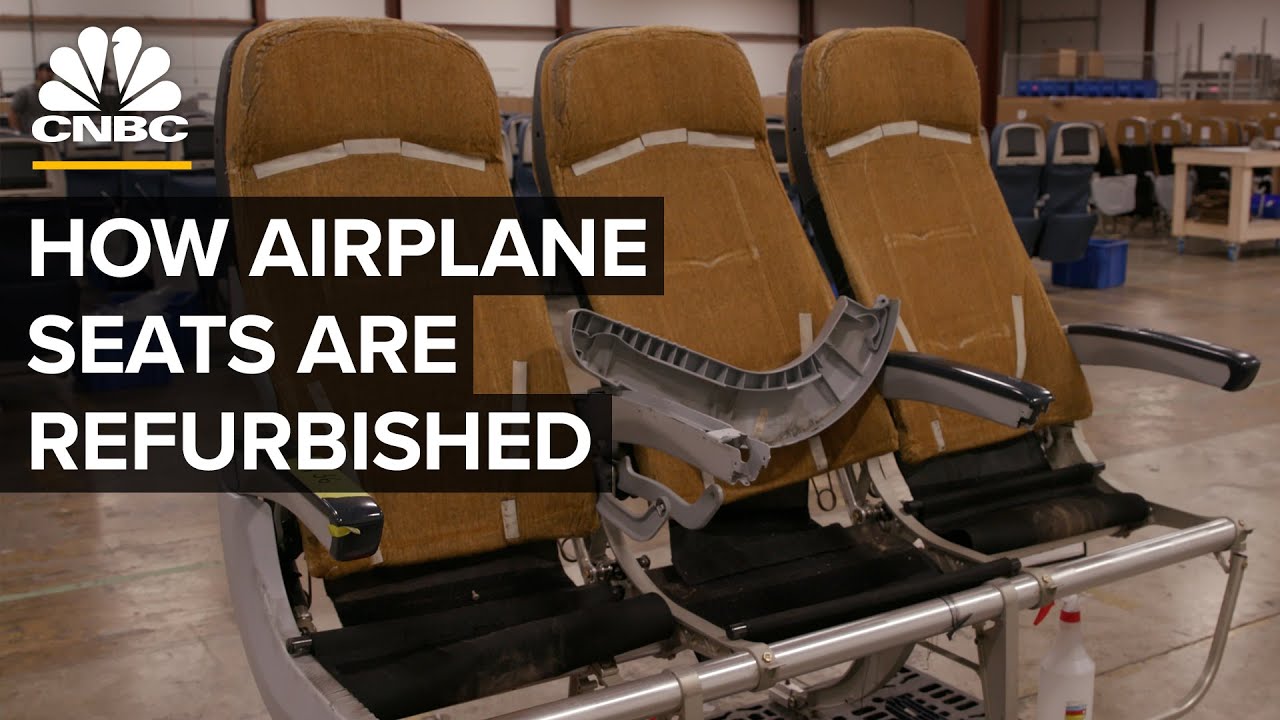How Old, Nasty Airplane Seats Are Given A Second Life
Unleash Your Creative Genius with MuseMind: Your AI-Powered Content Creation Copilot. Try now! 🚀
Airplane seats endure a lot of wear and tear. From spills and stains to dirt and debris, they can quickly become a breeding ground for all kinds of unsavory messes.
At Latitude Aero, a refurbishment company in North Carolina, they see just how dirty airplane seats can get. On average, they remove 2 to 3 pounds of dirt from a seat during the refurbishment process. And it's not just dirt – they also encounter Coca Cola, coffee, food scraps, and even human hair and DNA. It's safe to say that airplane seats could use a good cleaning every once in a while.
The Lucrative Business of Aircraft Interiors
The demand for refurbishing and retrofitting airplane seats is on the rise. In fact, the aircraft interiors market is projected to reach a staggering $6.5 billion in 2022. More and more airlines are starting to invest in interior upgrades as they return to profitability.
Replacing an entire set of airplane seats can be incredibly expensive, especially for larger aircraft with more complex seat designs. A typical economy class seat can cost around $5,000, while a business class seat with all the bells and whistles can range from $70,000 to $100,000 per seat. That's why many airlines choose to refurbish or refresh their existing seats instead.
Refreshing Rather Than Replacing
Instead of completely replacing their seats, airlines often opt for a more cost-effective solution. They strip down the seats they already have and give them a makeover. This "refresh" can include updating the seat covers and any visible parts while keeping the underlying structure intact. It's a way for airlines to give their cabins a new look without breaking the bank.
Latitude Aero specializes in this type of refurbishment. They take seats from other airlines or leasing companies, strip them down to the frame, repair any damage, and then rebuild them with new covers and finishes. It's a more sustainable approach that reduces landfill waste and can save airlines a significant amount of money.
The Challenges and Opportunities of Seat Refurbishment
Refurbishing airplane seats is no easy feat. Each seat comes with its own set of challenges, particularly if it has complex electrical systems or features. For example, lie-flat seats in the front of the aircraft require extensive troubleshooting, repair, and refurbishment.
Additionally, not all seats are the same. Different airlines have different seat designs and specifications, making it essential for refurbishment companies to be adaptable and flexible. It's a complex process that requires attention to detail and in-depth knowledge of each seat's maintenance manual, which can span hundreds of pages.
Despite the challenges, the future looks bright for seat refurbishment. Airlines are expected to continue investing in interior upgrades, and companies like Latitude Aero are already booked with projects well into 2025. As demand increases, there may even be opportunities to expand beyond seats and into other areas of the aircraft's interior, such as side walls, bins, PSUs, carpet, lavatories, and galleys.
In conclusion, airplane seats may not be the face of the airline, but they play a crucial role in providing comfort and convenience to passengers. With the growing demand for interior upgrades, refurbishment companies like Latitude Aero fill an essential niche in the aviation industry. So the next time you board a plane, take a moment to appreciate the effort and expertise that goes into giving those seats a second life.
